Australia So Much to See



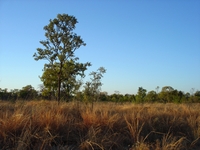
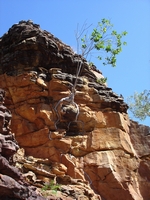
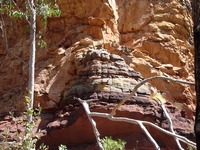
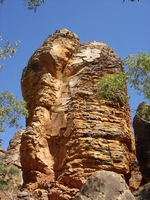
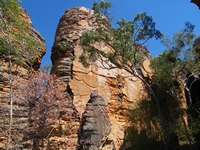
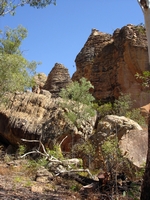
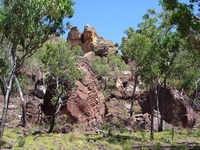
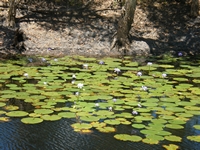
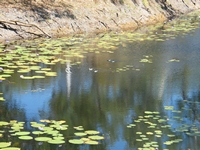
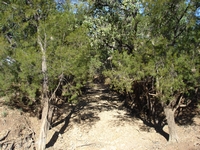
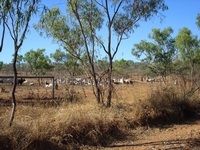
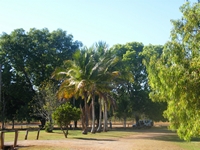
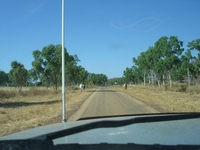
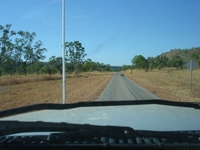
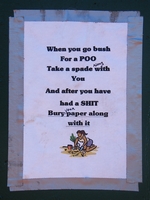
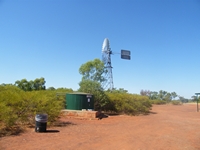
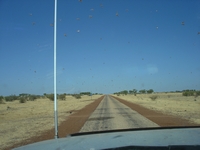
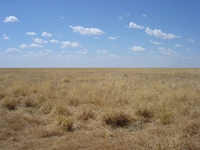
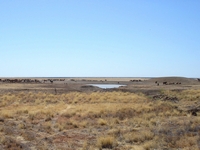
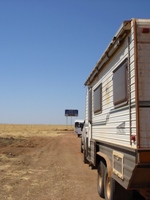
Our next adventure takes us through the vast Mitchell Grass plains of the Barkly Tablelands as we head towards Queensland
From Douglas Hot Springs we returned to meet the
Heading further south we reached Pine Creek. What we saw on our second visit here has been combined with the earlier travelogue.
We were now back on the road we had taken a few weeks earlier,
so did not stop for any further sightseeing, travelling through Katherine and Mataranka.
South of Mataranka, we were back
into the temperate rather than tropical zone, as semi tropical woodland soon became temperate woodland. Our solar power system
was achieving excellent results once again.
At Hi-Way Roadhouse near Daly Waters we re-fuelled and turned east onto the
Reaching Amungee Mungee Station, we were surprised to find much of the area had been cleared of trees and scrub, the timber had been
burnt, but far from completely where blackened sticks stood out amongst the re-growth, which appeared to be around three years old
and looked rather neglected. As of 2005, the station was used as an alternative more reliable transit route out of the Gulf
region for cattle during and post wet season. Approval was granted for the owner to commence land clearing for the introduction
of improved pasture to increase carrying capacity. It seems that in the three or four years since the report, little has been
done but the initial clearing. Although we didn't see any cattle grazing, there are cattle in the area, because a recently hit
cow lay dead alongside the road near here.
Cattle were run on the station as it was actively staffed in 2007 when the media reported a tragic story of Filipino worker died when thrown from the back of a swerving utility. Read news about the tragedy here and a further report here
The Bullwaddy Conservation Reserve is not far to the east and protects dense Lancewood/Bullwaddy woodland and is a haven for native
animals and reptiles. There are 78 species of birds, 33 reptile, eleven mammal and six frog species known in the Conservation
Reserve. Bullwaddy Conservation Reserve Plan of Management 2005
We passed
Mines east of
The first walk is an easy 150 metre return walk to a bird hide overlooking a small lagoon with blue lilies and bird life. A family
of green pygmy geese swam by. The two kilometre Barrawulla loop walk through the layered sandstone pillars in shades of brown,
orange and purple was of interest. We did not take the five kilometre Jagududgu spinifex loop walk which links into the pillars
walk due to the heat in the middle of the day and being unable to stay overnight to walk in the cool of morning.
Continuing on to Borroloola we found it an unimpressive and mainly Aboriginal town, with a number of campers heading to the coast
for fishing holidays passing through. King Ash Bay Fishing Club provides serviced camping at
We found the second fuel outlet
in Borroloola considerably cheaper than the first; in fact cheaper than we had paid at Hi-Way, but we lost any gain from the saving
on the price we paid for icecreams. Both fuel outlets were considerably cheaper than fuel back at
After a night camped a little way from the road, we continued on and met the
For some time after this, we travelled through a desert environment of spinifex, termite mounds and sparse scrub; much of which is
Aboriginal lands, with no signs that it had ever run livestock. At Soudan Station we again saw grasslands, cattle and horses.
In contrast to Amungee Mungee station, the stations from Bullwaddy onwards to Borroloola had large herds of cattle visible from the
road.
We stopped overnight at
Leaving
At Kiana rest area, a windmill provides water to a tank which travellers can access. There was a large bird nest high in the
windmill tower. Nearby a very wide road appeared to be more than a station access road, but with no mining activity listed in
the area, it was most likely just the access road to Kiana Station. Kiana cattle station was sold to an Indonesian company in
2005 with the previous owners remaining as managers. See here
A note on the tank has not been heeded, and there was the usual toileting residue on the tracks behind the rest area – something which
can be seen all too often in very popular rest areas.
Kiana is at the transition between the sandstone and gulf country of the north and the fertile grassy plains of the Barkly Tablelands. As we neared the intersections of the
The Barkly Plateau, which is principally grasslands with some scrub and trees, extends into western
We met a swarm of huge locusts, something we were to come across a few more times on our travels once we reached
Brunette Downs Rest Area also has a windmill and tank, and this where we chose to stop for lunch. From Brunette Downs for around
ninety kilometres, vegetation was principally Mitchell Grass.
The flat grassy terrain continued as we crossed into
We stopped at the Wonarah Bore Rest Area, forty kilometres east of Barkly Homestead Roadhouse. Like the other larger rest areas
throughout the Barkly, there is a windmill and tank. Here at Wonarah the water spills onto the ground and is a haven for large
flocks of zebra finches.